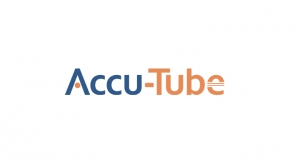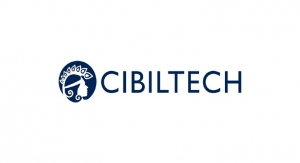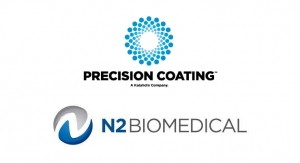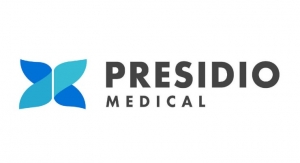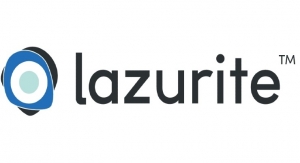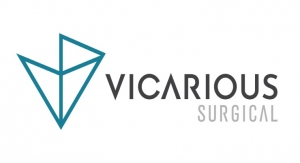Jon Speer, Founder and VP of QA/RA, greenlight.guru09.07.17
Does $20 million sound like a lot of money to you?
For larger medical device companies, it might not seem like a lot, but for startups and smaller companies, you’d feel the burn if you took a $20 million haircut on your company's valuation.
I sat down for a chat with Ronny Bracken, a 27-year veteran of medical device product development who has been involved at the startup level as well as the large, multi-national company level. That $20 million haircut is something that he has seen happen frequently. Ronny’s current role is principal for Paladin Biomedical Consultants LLC, as well as chief operating officer for Nanofiber Solutions, a tissue engineering startup.
Ronny has regularly sat on the side of the table for larger companies looking to acquire a smaller company. He has witnessed the good, bad, and ugly that lead to the eventual valuation of the smaller business.

Jon Speer is the founder and VP of QA/RA at greenlight.guru.
Take it from him; he knows his stuff and he shared with me some of the mistakes he’s been seeing and what companies can do to improve.
The Biggest Mistakes
I wanted to know what the single, biggest mistake was Ronny has seen a medical device developer make, and his answer was surprisingly simple. Too many young companies fall in love with their own technology to the point where their judgement becomes clouded about what they really need to do to develop the end product.
Of course your new technology might be an exciting breakthrough, but there’s more to it than “Can I make this device?” You need to consider the entire lifecycle, the delivery mechanism, packaging, labeling, and, of course, quality systems and regulations. In a sense, your work has really only just begun with that brilliant new piece of technology.
We went on to discuss the second biggest mistake, which really follows directly from the first one. In his experience, too many small medical device companies fail to have the right level of discipline. They complain about regulations and paperwork, but they’re missing the fact that it’s simply a way of life in the medical device field.
A better approach is to embrace the fact that you need to deal with the regulations and paperwork. It is best to figure out the most efficient ways to satisfy the regulations while continuing to develop a great product. When done right, your documentation does actually help in the long-run (including with that extra $20 million, as we’ll get into in a minute).
A good question to ask yourself is, “How do I use all the tools out there to my advantage as a developer?” The key for any business is using those tools wisely matters, as do good routines. Your team needs to work well together on this from the beginning.
Avoid Risk ‘Mismanagement’
Whatever your feelings have been about the need for regulations and paperwork, all signs over the last few years have pointed to more regulations rather than less. Despite this, there have still been classic signs of risk “mismanagement,” in particular in startups.
When Ronny first started in the medical device industry, risk management was often a “do it and move on” activity. I did it myself, too—sitting down one afternoon many years ago to prepare design control documentation because I “had to.” I accomplished the task and checked the box off, but it really added nothing to the development process that I was going through.
It might require a bit of a mindset shift for many companies, but your risk management and quality systems represent an opportunity to change the way your company operates for better. For example, design controls were intended to help you identify potential failures and mitigate them early. A lot of people still want to treat it as a “checkbox” activity, but it is a really good tool when used properly as it helps a company develop a better product.
Ronny sees a wide range of companies that have really embraced regulations in their entirety and have tried to do a good job of building solid design files, yet others often haven’t done very well. You’ll often hear that same story going back to a love for the technology; “I really want to focus on getting the technology perfected first, then I’ll look at that regulation stuff.”
All we can say is, don’t do it. Do not leave your design controls and quality system components as an “I’ll do it later” activity, because later might really cost you.
Here’s how that might look; let’s say you’re a small company looking to be acquired and you’ve had one or two larger companies show an interest. They’re keen to see all of your documentation, testing, and processes, but there are holes when it comes to regulatory paperwork.
Now, remember this—larger companies naturally get more FDA scrutiny and if they look to acquire you, they’re taking on that compliance risk. As a smaller company, you may have more leeway but that doesn’t exist for your potential acquirers. As a result, that larger company now has work to do to bring your company up to scratch regulation-wise. If they have to go in and mitigate risk, they’re putting money into additional quality and R&D professionals, because they don’t want their own risk profile to take a hit.
Do you know what happens now? That large acquiring company reduces the valuation for your company because they have to invest in work to bring you up to compliance. There goes that extra $20 million!
The Future for Medical Device Startups
If you take a look around at what larger companies have in their mix, you will find that a lot of their product lines include technologies they’ve acquired. There aren’t as many acquisitions of smaller companies happening now because the landscape has changed in the last decade. What we’re seeing is that the big companies are joining forces instead.
Startups will always have a place, but we’ll find those larger companies have more purchasing or negotiating power. Startups need to recognize this and realize the importance of having all of their regulatory “ducks” in a row. Just as an example, cardiovascular technologies are huge in the startup world, but there are less large companies in the field now due to consolidation. This means less options for acquisition and a strong need to impress out the gate.
With this landscape in mind, Ronny has some advice for startups:
That puts a tidy wrap on it really. Don’t be that company who is so in love with its own technology that it fails to grasp the bigger picture of bringing a safe, proven medical device to market.
Embrace the fact that following the regulations for quality systems and paperwork requirements are a way of life in this industry and can, in fact, help you to create a better product. Not only that, they can be better for your bottom line. Extra $20 million, anyone?
Jon Speer is the founder and VP of QA/RA at greenlight.guru, a software company that produces the only modern quality management software solution exclusively for medical device companies. Device makers in more than 250 cities in 26 countries use greenlight.guru to get safer products to market faster with less risk while ensuring compliance. Speer is a medical device industry veteran with over 18 years of experience, having helped dozens of devices get to market over his career in a variety of roles, including product development, project management, quality, and regulatory. He is also a thought leader, speaker, and regular contributor at numerous leading industry publications.
For larger medical device companies, it might not seem like a lot, but for startups and smaller companies, you’d feel the burn if you took a $20 million haircut on your company's valuation.
I sat down for a chat with Ronny Bracken, a 27-year veteran of medical device product development who has been involved at the startup level as well as the large, multi-national company level. That $20 million haircut is something that he has seen happen frequently. Ronny’s current role is principal for Paladin Biomedical Consultants LLC, as well as chief operating officer for Nanofiber Solutions, a tissue engineering startup.
Ronny has regularly sat on the side of the table for larger companies looking to acquire a smaller company. He has witnessed the good, bad, and ugly that lead to the eventual valuation of the smaller business.

Jon Speer is the founder and VP of QA/RA at greenlight.guru.
The Biggest Mistakes
I wanted to know what the single, biggest mistake was Ronny has seen a medical device developer make, and his answer was surprisingly simple. Too many young companies fall in love with their own technology to the point where their judgement becomes clouded about what they really need to do to develop the end product.
Of course your new technology might be an exciting breakthrough, but there’s more to it than “Can I make this device?” You need to consider the entire lifecycle, the delivery mechanism, packaging, labeling, and, of course, quality systems and regulations. In a sense, your work has really only just begun with that brilliant new piece of technology.
We went on to discuss the second biggest mistake, which really follows directly from the first one. In his experience, too many small medical device companies fail to have the right level of discipline. They complain about regulations and paperwork, but they’re missing the fact that it’s simply a way of life in the medical device field.
A better approach is to embrace the fact that you need to deal with the regulations and paperwork. It is best to figure out the most efficient ways to satisfy the regulations while continuing to develop a great product. When done right, your documentation does actually help in the long-run (including with that extra $20 million, as we’ll get into in a minute).
A good question to ask yourself is, “How do I use all the tools out there to my advantage as a developer?” The key for any business is using those tools wisely matters, as do good routines. Your team needs to work well together on this from the beginning.
Avoid Risk ‘Mismanagement’
Whatever your feelings have been about the need for regulations and paperwork, all signs over the last few years have pointed to more regulations rather than less. Despite this, there have still been classic signs of risk “mismanagement,” in particular in startups.
When Ronny first started in the medical device industry, risk management was often a “do it and move on” activity. I did it myself, too—sitting down one afternoon many years ago to prepare design control documentation because I “had to.” I accomplished the task and checked the box off, but it really added nothing to the development process that I was going through.
It might require a bit of a mindset shift for many companies, but your risk management and quality systems represent an opportunity to change the way your company operates for better. For example, design controls were intended to help you identify potential failures and mitigate them early. A lot of people still want to treat it as a “checkbox” activity, but it is a really good tool when used properly as it helps a company develop a better product.
Ronny sees a wide range of companies that have really embraced regulations in their entirety and have tried to do a good job of building solid design files, yet others often haven’t done very well. You’ll often hear that same story going back to a love for the technology; “I really want to focus on getting the technology perfected first, then I’ll look at that regulation stuff.”
All we can say is, don’t do it. Do not leave your design controls and quality system components as an “I’ll do it later” activity, because later might really cost you.
Here’s how that might look; let’s say you’re a small company looking to be acquired and you’ve had one or two larger companies show an interest. They’re keen to see all of your documentation, testing, and processes, but there are holes when it comes to regulatory paperwork.
Now, remember this—larger companies naturally get more FDA scrutiny and if they look to acquire you, they’re taking on that compliance risk. As a smaller company, you may have more leeway but that doesn’t exist for your potential acquirers. As a result, that larger company now has work to do to bring your company up to scratch regulation-wise. If they have to go in and mitigate risk, they’re putting money into additional quality and R&D professionals, because they don’t want their own risk profile to take a hit.
Do you know what happens now? That large acquiring company reduces the valuation for your company because they have to invest in work to bring you up to compliance. There goes that extra $20 million!
The Future for Medical Device Startups
If you take a look around at what larger companies have in their mix, you will find that a lot of their product lines include technologies they’ve acquired. There aren’t as many acquisitions of smaller companies happening now because the landscape has changed in the last decade. What we’re seeing is that the big companies are joining forces instead.
Startups will always have a place, but we’ll find those larger companies have more purchasing or negotiating power. Startups need to recognize this and realize the importance of having all of their regulatory “ducks” in a row. Just as an example, cardiovascular technologies are huge in the startup world, but there are less large companies in the field now due to consolidation. This means less options for acquisition and a strong need to impress out the gate.
With this landscape in mind, Ronny has some advice for startups:
- You’re not in as strong a negotiating position as you once were. You must have unique technology, an exemplary product, and all of your business aspects buttoned up (e.g., market data, quality controls, risk management etc).
- Don’t be a one-trick pony. Have a solid team in place and a business model to move forward and generate revenue.
- Medical device companies buy revenue more often than they buy technology. More than 80 percent of deals are done for revenue. This is important to remember because…
- ...you will often have to carry through your product development to proof and commercialization. You’ll have to get through FDA approval and you must have a good system in place. We’re seeing that companies are better acquisition targets if they have gone through clearance, gone to market, and had clinical work done on the product. Companies are more interested in the proven product than taking over an as-yet unproven technology, which is a shift from past trends.
- If you’re going to lose, lose early. Learn and move on; don’t be blinded by your technology so much that you continue development well past advisable parameters. We’ve seen stressed-out companies running out of funding when they should have halted months ago.
- Understand what the customer wants so that you understand whether you have the right product.
- Know who the customer really is. They might not be the patient, as is commonly thought—it’s whomever is making the final purchasing decision. That is the person you are really selling to.
That puts a tidy wrap on it really. Don’t be that company who is so in love with its own technology that it fails to grasp the bigger picture of bringing a safe, proven medical device to market.
Embrace the fact that following the regulations for quality systems and paperwork requirements are a way of life in this industry and can, in fact, help you to create a better product. Not only that, they can be better for your bottom line. Extra $20 million, anyone?
Jon Speer is the founder and VP of QA/RA at greenlight.guru, a software company that produces the only modern quality management software solution exclusively for medical device companies. Device makers in more than 250 cities in 26 countries use greenlight.guru to get safer products to market faster with less risk while ensuring compliance. Speer is a medical device industry veteran with over 18 years of experience, having helped dozens of devices get to market over his career in a variety of roles, including product development, project management, quality, and regulatory. He is also a thought leader, speaker, and regular contributor at numerous leading industry publications.




